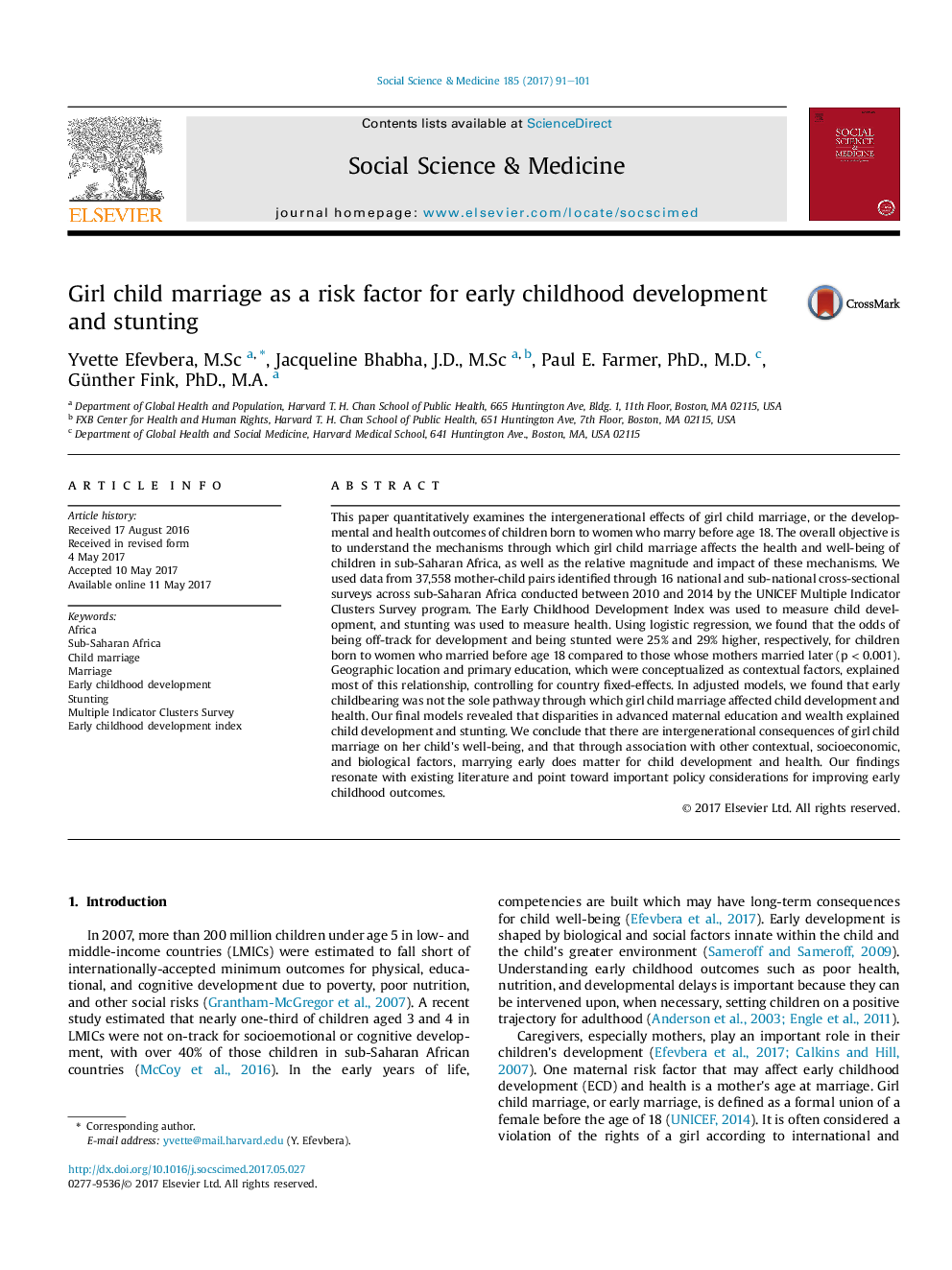| کد مقاله | کد نشریه | سال انتشار | مقاله انگلیسی | نسخه تمام متن |
|---|---|---|---|---|
| 5046407 | 1475984 | 2017 | 11 صفحه PDF | دانلود رایگان |
- Uniquely examines how girl child marriage affects child development and stunting.
- Provides framework to conceptualize how girl child marriage affects child well-being.
- Focuses on mechanisms explaining child outcomes associated with girl child marriage.
- Reveals that early childbearing alone does not explain poor child outcomes.
- Contributes to understanding health and rights issue in sub-Saharan Africa.
This paper quantitatively examines the intergenerational effects of girl child marriage, or the developmental and health outcomes of children born to women who marry before age 18. The overall objective is to understand the mechanisms through which girl child marriage affects the health and well-being of children in sub-Saharan Africa, as well as the relative magnitude and impact of these mechanisms. We used data from 37,558 mother-child pairs identified through 16 national and sub-national cross-sectional surveys across sub-Saharan Africa conducted between 2010 and 2014 by the UNICEF Multiple Indicator Clusters Survey program. The Early Childhood Development Index was used to measure child development, and stunting was used to measure health. Using logistic regression, we found that the odds of being off-track for development and being stunted were 25% and 29% higher, respectively, for children born to women who married before age 18 compared to those whose mothers married later (p < 0.001). Geographic location and primary education, which were conceptualized as contextual factors, explained most of this relationship, controlling for country fixed-effects. In adjusted models, we found that early childbearing was not the sole pathway through which girl child marriage affected child development and health. Our final models revealed that disparities in advanced maternal education and wealth explained child development and stunting. We conclude that there are intergenerational consequences of girl child marriage on her child's well-being, and that through association with other contextual, socioeconomic, and biological factors, marrying early does matter for child development and health. Our findings resonate with existing literature and point toward important policy considerations for improving early childhood outcomes.
Journal: Social Science & Medicine - Volume 185, July 2017, Pages 91-101
